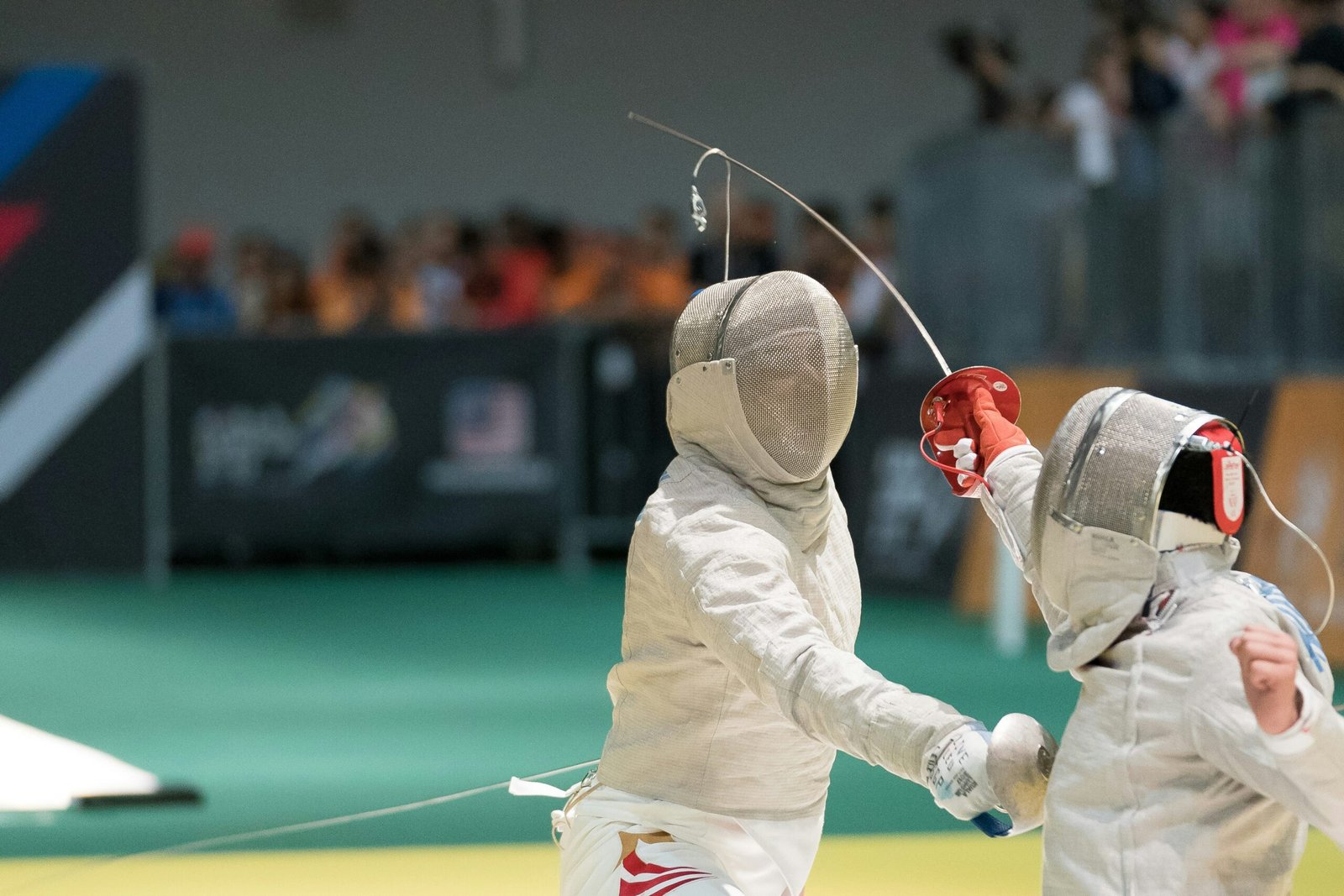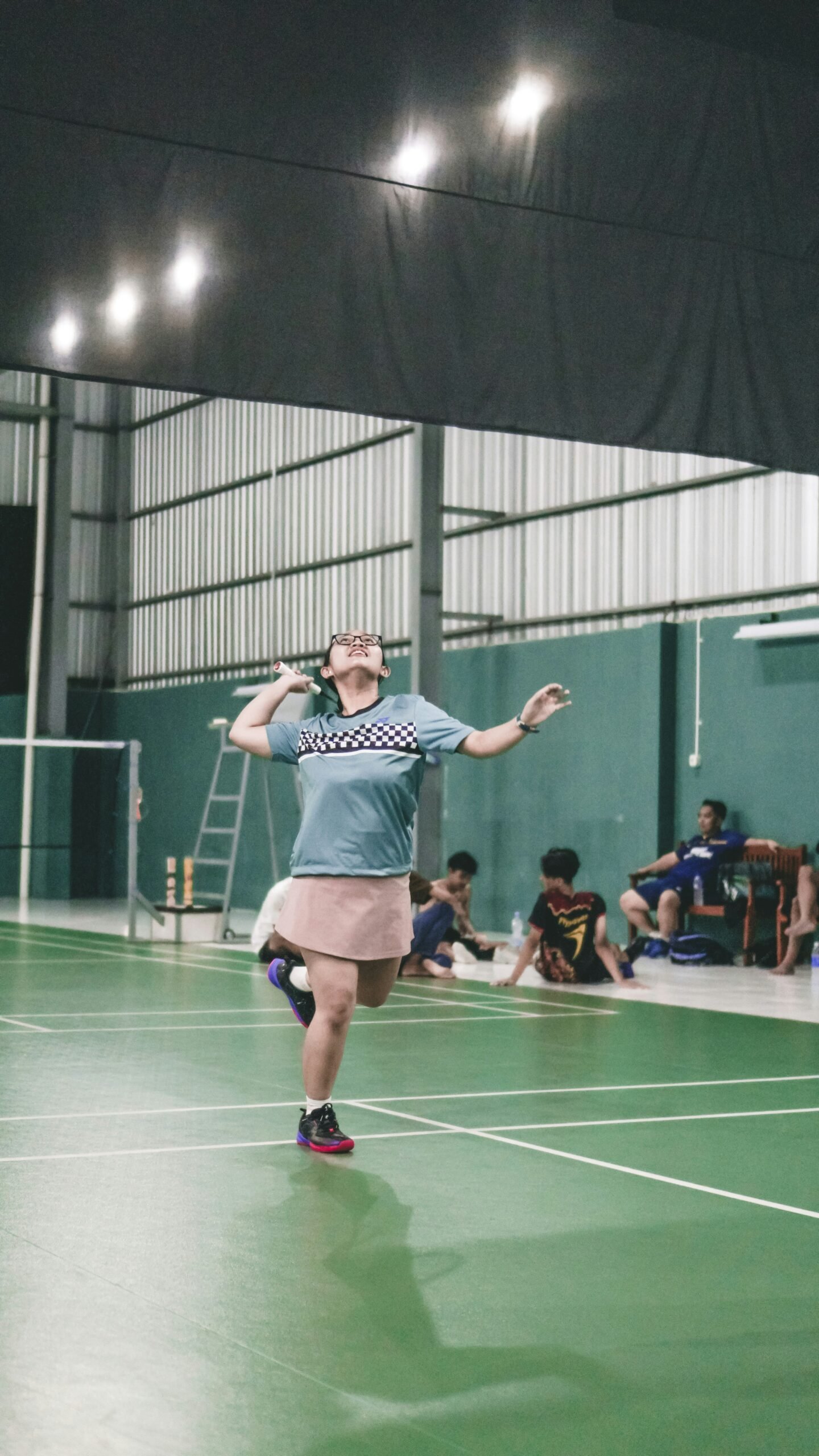Introduction to Badminton Footwork
Footwork in badminton is often regarded as one of the most essential components that contribute to a player’s overall performance. Proper foot movement allows players to position themselves effectively on the court, facilitating swift and accurate shot execution. The agility demonstrated through meticulous footwork can often distinguish proficient players from their less skilled counterparts.
The foundational concept of badminton footwork revolves around the ability to move quickly in any direction. Players must be capable of transitioning between various stances and movements seamlessly, enabling them to respond to their opponent’s actions. This becomes particularly important during matches, where the pace can change rapidly. Effective footwork not only enhances a player’s speed but also their ability to maintain balance and control, crucial for executing power shots and defensive plays alike.
Moreover, agility plays a pivotal role in the realm of badminton footwork. A player must not only move quickly but also efficiently switch directions. This agility is achieved through consistent practice and mastery of various footwork techniques. Players typically utilize a range of steps, such as the lunge and side step, to reach the shuttlecock with precision. With the right footwork, players can generate momentum, allowing for explosive bursts of speed that can surprise their opponents.
In summary, the relationship between footwork and overall badminton performance cannot be overstated. Mastering foot movement leads to improved positioning, agility, and balance, which collectively optimize a player’s ability to execute varied shots. As badminton is a sport that relies heavily on quick reflexes and strategic positioning, understanding and incorporating efficient footwork techniques into training regimens is essential for aspiring athletes who seek success in the game.
Types of Footwork Techniques
Footwork is crucial in badminton as it enables players to move quickly and efficiently across the court. Several techniques have been developed to enhance mobility and shot execution. Among these, the split step, lunge, shuffle, and cross-step are essential techniques that every player should master.
The split step is often considered the foundational movement in badminton. It involves a small jump just as the opponent strikes the shuttlecock, allowing players to react swiftly to the direction of the shuttle. This technique positions the player for an explosive movement towards the shuttle, enhancing their ability to return a shot effectively. It is paramount in maintaining balance and readiness, which is essential during fast-paced exchanges.
Another key technique is the lunge, which allows players to cover distance rapidly while maintaining balance. This movement is particularly effective when the shuttlecock is hit towards the far corners of the court. During a lunge, a player should ensure that they extend one leg forward, lower their body, and keep their other foot firmly grounded. Proper execution of the lunge can significantly improve reach and angle for returning the shuttle, particularly in tight situations.
The shuffle is a sideways movement that allows players to adjust their position without turning their back to the net. It is particularly useful for maintaining court coverage during rallies. By utilizing short, quick steps, players can stay balanced and ready to respond to unexpected shots. Finally, the cross-step technique is beneficial when players need to quickly change direction. This technique involves stepping across with one foot to facilitate a more rapid movement toward the shuttle. Effective use of the cross-step can enhance court coverage and reaction time, essential factors for competitive play.
Mastering these footwork techniques can significantly impact a player’s performance, improving positioning and shot accuracy during matches. By integrating these strategies into practice, players can enhance their overall game and increase their chances of success on the court.
The Role of Footwork in Shot Execution
Footwork is a critical component of badminton that significantly influences the execution of various shots, including smashes, drops, and clears. To perform these shots effectively, a player must be able to position themselves correctly on the court. The relationship between foot placement and shot accuracy cannot be overstated; proper footwork enables a player to reach the shuttlecock at the optimal angle, thereby enhancing both power and control.
When executing a smash, for instance, effective footwork allows a player to generate maximum force. The approach requires players to move swiftly towards the shuttle, positioning the feet correctly to facilitate a strong upward swing. By employing rapid and precise foot movements, players can create a solid base which is essential for delivering a powerful overhead shot. Conversely, poor footwork can lead to awkward body positioning, resulting in weak or misdirected shots.
The same principle applies to dropping shots, where subtlety is key. For a successful drop, a player must be able to transition smoothly from a defensive position to an offensive one. This transition involves quick lateral movements and the ability to pivot effectively. Missteps in foot placement often lead to delayed reactions, which can ultimately compromise shot precision. The ability to control one’s movement directly correlates with the quality of the drop shot, emphasizing the necessity of refined footwork.
Moreover, the execution of clearing shots also benefits immensely from effective footwork. A well-timed foot movement can help players reach the shuttle faster and establish the optimal angle for a clear shot, which targets the rear of the opponent’s court. In this context, footwork not only facilitates movement but also supports the strategy underlying shot selection, making a solid understanding of footwork indispensable for any badminton player.
Improving Agility and Speed through Footwork
Footwork plays a pivotal role in badminton, influencing both agility and speed. To enhance these critical attributes, players should incorporate specific training drills and exercises into their routines. Among the most effective drills are ladder drills, cone drills, and shadow badminton. Each of these drills targets various aspects of footwork, contributing to improved movement on the court.
Ladder drills are particularly beneficial for developing quick, agile footwork. These drills involve a series of rapid steps through a ladder laid out on the ground. Players can perform different foot patterns, such as high knees, lateral shuffles, and one-leg hops. These exercises not only improve speed but also enhance coordination and stability, which are crucial for executing precise movements during a match.
Cone drills serve as another effective method to elevate footwork. By setting up cones in various formations, players can practice changing directions rapidly while maintaining control and balance. For example, a zigzag pattern requires quick lateral movement, whereas a T-drill involves sprinting forward and backtracking. Incorporating these cone drills into training regimens sharpens players’ reflexes and allows for smoother transitions between different foot positions, significantly improving overall court movement.
Shadow badminton, though often underrated, also plays a vital role in enhancing footwork. This exercise entails mimicking badminton movements and footwork patterns without an actual shuttlecock. Players can focus on their stance, positioning, and the efficiency of their foot movements. Practicing shadow badminton allows players to visualize their actions, which aids in muscle memory and instills smoother, more instinctive responses during gameplay.
Ultimately, consistent practice of these drills will lead to noteworthy improvements in agility and speed. Mastering footwork not only provides a competitive edge but also contributes to the overall success of a badminton player’s performance. With dedication to training, the advancements made in footwork will reflect positively in matches.
Footwork Alignment and Court Positioning
Footwork alignment and court positioning play a crucial role in badminton performance. Maintaining optimal footwork alignment ensures that players can quickly and efficiently move to respond to their opponent’s shots. Proper alignment allows players to maintain balance while executing strokes, which is vital for both defensive and offensive plays. One fundamental strategy is to adopt a ready stance, which positions the feet shoulder-width apart, enabling immediate lateral movements and forward thrusts. This foundational position supports agility and quick direction changes, essential elements in the fast-paced nature of badminton.
Additionally, players should develop the ability to read the game effectively. Anticipating an opponent’s shot is integral to proper court positioning. This involves analyzing the opponent’s body language, racket angle, and shot selection. By understanding these cues, players can preemptively adjust their positioning, thereby reducing reaction time. For instance, if an opponent shifts their weight towards their back foot, it may signal an impending clear or smash, prompting the player to move backward or adjust their position accordingly. Familiarity with standard shot patterns further enhances this anticipatory skill, allowing players to forego their immediate reactions in favor of strategic movement.
Moreover, mastering the concept of optimal court positioning is essential for counterattacking effectively. Players should strive to position themselves at an angle that allows them to exploit any weaknesses in their opponent’s placement. Instead of merely reacting to the shuttlecock, proactive positioning enables players to control the rally. For example, after returning a shot, players must quickly realign their feet and body to prepare for the next potential exchange. Utilizing drills that emphasize footwork and positioning can significantly improve overall performance, ultimately leading to greater success on the court.
Injury Prevention through Proper Footwork
Footwork is a fundamental skill in badminton that directly impacts a player’s performance and safety. Proper footwork not only enhances agility and speed but also plays a significant role in preventing injuries. When athletes lack adequate footwork techniques, they expose themselves to a range of common injuries, such as sprains, strains, and even more severe conditions like tendinitis. These injuries often arise from improper landing techniques or sudden movements that strain muscles and ligaments.
One of the most common injuries related to poor footwork is ankle sprains. Players frequently twist or roll their ankles during rapid directional changes or when they land awkwardly after a jump. Similarly, knee injuries can occur due to poor body alignment during movement, leading to excessive pressure on the knee joint. Additionally, these unhealthy movement patterns may contribute to overuse injuries, particularly in the lower back and hips, which can significantly hinder an athlete’s performance.
To effectively mitigate these risks, it is essential to adopt safe footwork practices. Players should emphasize proper positioning while moving, ensuring the feet are shoulder-width apart to maintain balance and stability. Practicing footwork drills that cultivate anticipatory movement skills can significantly enhance a player’s agility. Moreover, integrating strength training and flexibility exercises into a training regimen is vital in developing robust muscles around critical joints, thereby reducing the likelihood of injuries.
Moreover, athletes should prioritize warm-up and cooldown sessions before and after play. These practices not only prepare the body for physical activity but also aid in recovery, keeping injuries at bay. By recognizing the importance of proper footwork and implementing effective strategies, players can enhance their performance while ensuring their safety on the court.
Analyzing Professional Players’ Footwork
The footwork of professional badminton players is a fundamental component in their overall performance, serving as a key element in both offensive and defensive strategies. Elite players demonstrate exceptional agility, balance, and speed through their footwork techniques, which significantly influences the outcome of matches. For instance, analyzing the footwork of world-renowned players such as Lin Dan and Lee Chong Wei reveals a pattern of strategic movements that enhance their effectiveness on the court.
One notable example occurred during the 2012 London Olympics, where Lee Chong Wei faced Lin Dan in a thrilling final match. Throughout the contest, both players showcased their superb footwork, allowing them to respond swiftly to their opponent’s shots. Lin Dan, known for his powerful attacks, utilized a range of footwork patterns, including lateral movements and quick pivots, to maintain his position and hit decisive shots. This enabled him to stay one step ahead, demonstrating how diverse footwork can create both offense and defense opportunities.
Moreover, a close examination of the 2021 All England Open highlights the significance of footwork in high-stakes scenarios. Viktor Axelsen’s performance showcased how efficient footwork could be pivotal in creating angles and opportunities to outmaneuver opponents. His use of cross-step movements enabled him to cover the court rapidly while positioning himself optimally for powerful smashes. This tactical deployment of footwork under pressure exemplifies the critical role it plays in elite badminton.
In addition to technique, understanding the biomechanics involved in footwork is essential. Professional players utilize various footwork strategies, such as the split-step and shuffle, to enhance their responsiveness. These techniques not only contribute to overall movement but also improve balance and stability, essential traits for success in competitive badminton. As high-level players demonstrate, mastering footwork can lead to a distinct competitive advantage on the court.
Common Footwork Mistakes to Avoid
Footwork is a critical aspect of badminton that can significantly influence overall performance. Even players with advanced skills may fall victim to common footwork mistakes that can hinder their effectiveness on the court. Recognizing these pitfalls is essential for improving movement and gaining an advantage over opponents. One prevalent error is inadequate preparation for shots. Many players establish their positions but neglect to adjust their foot placement adequately, resulting in inefficient execution. It is crucial to anticipate the trajectory of the shuttlecock and position oneself accordingly to ensure that the stroke is both powerful and accurate.
Another common mistake is failure to maintain an active stance. Players often become complacent while waiting for their opponent’s shot, neglecting to keep their feet ready to spring into action. A passive stance can detract from agility, making it challenging to respond to fast-paced, unpredictable play. Practicing an athletic stance—where weight is distributed evenly, and the knees are slightly bent—will help enhance responsiveness during matches.
Moreover, not using the toes to pivot can contribute to sluggish movement. When players rely heavily on their heels instead of utilizing their toes for quick directional changes, they limit their ability to maneuver effectively. Incorporating toe-dominant movement techniques into training can foster quicker transitions across the court.
Additionally, improper footwork can negatively impact shot recovery. Players may neglect to reposition themselves after a shot, affecting their ability to follow up with subsequent plays. Developing habits to consistently return to a strong base position after hitting a shuttlecock is vital for seamless ongoing play.
In order to maximize performance, addressing these footwork mistakes should be a priority for all badminton players. By focusing on preparation, maintaining an active stance, utilizing toes for pivoting, and enhancing recovery techniques, players can significantly improve their court movement and overall effectiveness in matches.
Conclusion: The Key Takeaways on Footwork in Badminton
Footwork is a fundamental component of badminton that often distinguishes good players from great ones. Mastering footwork is essential not only for improving overall performance but also for enhancing agility, speed, and efficiency on the court. Throughout this discussion, key aspects of footwork have been emphasized, showcasing its pivotal role in various skills such as serving, returning shots, and maintaining equilibrium during play. Effective footwork allows players to position themselves optimally, respond quickly to opponents’ shots, and execute a wider range of techniques with precision.
One vital takeaway is the necessity to integrate footwork training into regular practice routines. Regardless of skill level, every badminton player can benefit from dedicated exercises focusing on agility, balance, and speed. Implementing drills that simulate in-game movements will not only enhance footwork but also build muscle memory, making these movements instinctive during matches. Additionally, understanding the dynamics of footwork—such as the importance of the ready position, shuttlecock anticipation, and directional changes—can significantly improve a player’s on-court effectiveness.
To cultivate ongoing development in footwork, players should prioritize setting specific goals related to movement. Continuous assessment and refinement of footwork techniques will contribute directly to overall game improvement. Seeking feedback from coaches, using video analysis, and engaging in peer discussions can also provide insights that further accelerate progress. Lastly, embracing the mindset of lifelong learning and adaptation in footwork practices will not only elevate individual skills but also enrich the collective performance experienced within the sport.







+ There are no comments
Add yours